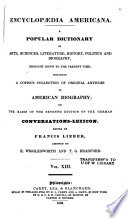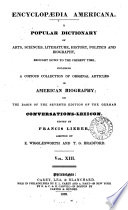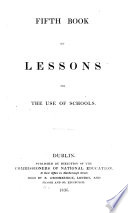 | Thomas Dick - 1799 - 200 pages
...of air from each of the temperate zones moves towards the equator. But these north and south winds pass from regions where the rotatory motion of the earth's surface is less to those where it is greater. Unable at once to acquire this new velocity, they are left behind;... | |
 | H. J. Lloyd - 1828 - 80 pages
...towards the equator. But (as in the case of the polar currents in the ocean) these north and south winds pass from regions, where the rotatory motion of the earth's surface is less, to those where it is greater. Unable at once to ac^to the Philippine islands, iseerformed " "¿Tnere... | |
 | Francis Lieber, Edward Wigglesworth, Thomas Gamaliel Bradford - 1833 - 614 pages
...towards the equator. But (as in the case of the polar currents in the ocean) these north and south winds pass from regions where the rotatory motion of the earth's surface is less to those where it is greater. Unable at once to acquire this new velocity, they are left behind,... | |
 | Encyclopaedia Americana - 1833 - 548 pages
...towards the equator. But (as in the case of the polar currents in the ocean) these north and south winds pass from regions where the rotatory motion of the earth's surface is less to those where it is greater. Unable at once to acquire this new velocity, they are left behind,... | |
 | 1834 - 578 pages
...towards the equator. But (as in the case of the polar currents in the ocean) these north and south winds pass from regions, where the rotatory motion of the earth's surface is less, to those where it is greater. Unable at once to acquire this new velocity, they are left behind,... | |
 | Ireland commissioners of nat. educ - 1835 - 398 pages
...atmosphere from each of the temperate zones moves towards the equator. But these north and south winds pass from regions, where the rotatory motion of the earth's surface is less, to those where it is greater. Unable at once to acquire this new velocity, they are left behind,... | |
 | 1836 - 424 pages
...atmosphere from each of the temperate zones moves towards the equator. But these north and south winds pass from regions, where the rotatory motion of the earth's surface is less, to those where it is greater. Unable at once to acquire this new velocity, they are left behind,... | |
 | William Martin - 1838 - 368 pages
...atmosphere from each of the temperate zones moves towards the equator. But these north and south winds pass from regions, where the rotatory motion of the earth's surface is less, to those where it is greater. Unable at once to acquire this new velocity, they are left behind,... | |
 | 1841 - 982 pages
...atmosphere from each of the temin the case of the polar currents in the ocean) these north and south winds pass from regions where the rotatory motion of the earth's surface is less to those where it is greater. Unable at once to acquire this new velocity, they are left behind,... | |
 | 1873 - 744 pages
...each of the temperate zones is drawn towards the Equator. But these cooler north and south currents pass from regions where the rotatory motion of the earth's surface is less, to where it is greater. Unable at once to acquire this increased rate of motion, they are left... | |
| |